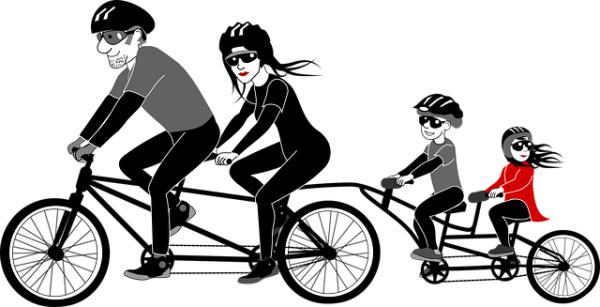We recently got a Peloton, and I must say, I do love that bike; there is something about the instructor’s ability to distract me until the last part of the workout that keeps me firmly in the saddle and sweating. You would think that all that exercise would provide “new definition” to my rapidly aging calf muscles. You would be wrong. A new article in Frontiers in Physiology attempts to answer an old question, is muscle development “just like riding a bike,” and you never forget or are the words of the trainers true, “use it or lose it?”
Muscles are the largest tissue group in the body and anyone who has seen Arnold Schwarzenegger in his youth and now knows muscles are very changeable growing larger and smaller. They respond to so many environmental stimuli, like exercise or steroids, and internal stimuli like innervation by nerves or blood supply. Muscles not only are comprised of the body’s largest cells, but they are so tightly integrated, fused, that they act as syncytium – cells with multiple nuclei.
Early studies suggested that as muscles grew, more nuclei were formed and in the mathematical way of scientists, it became the hypothesis that nuclei could only be responsible for a given amount of muscular tissue. More tissue, more nuclei. Of course, less muscle tissue, muscular atrophy, should result in fewer nuclei and microscope studies did indeed show the disintegration of nuclei as muscle mass was lost. So, use it or lose it could well be the case.
As you know, it is always a bit more complicated. As our ability to distinguish tissue improved, we discovered that those disintegrating nuclei belong not to the muscle, but the inflammatory cells associated with the loss of muscle – a case of microscopic misidentification. In a series of experiments involving both rodents and insects, it seems that the gains in nuclei with muscle growth were retained, they were just a bit quiescent. Given the wear and tear on muscular tissue, the all or none of the use it or lose it seems to be a less resilient or practical solution.
One of the implications of this finding is that many activities are in fact, like riding a bike. It may take a while for that muscle to develop and with disuse, the mass seems to diminish, but the ability to “ride again” is retained because the additional nuclei were not lost. Can this help explain a retraining effect?
There are two other implications that the authors thought worth mentioning. First, if we let our children “bulk up” a bit in their youth when they have the energy, time and hormonal milieu, they may be able to “bank” those nuclei for a rainy day, when they are much older. Makes you want to rethink dropping physical education from the school day, it may do more than tire them out and help them focus. Second, the effect of steroids on muscle development is well known, but this data suggests that the effect of such “cheating” among professional athletes may last well beyond the time that they are taking those enhancing drugs.
As for me, I’m just happy to be riding my Peloton; my goal is simply to be fit for another day, I will leave the sculpting of muscles to a younger crowd.
Source: Skeletal Muscles Do Not Undergo Apoptosis During Either Atrophy or Programmed Cell Death-Revisiting the Myonuclear Domain Hypothesis Frontiers in Physiology DOI:10.3389/fphys.2018.01887




